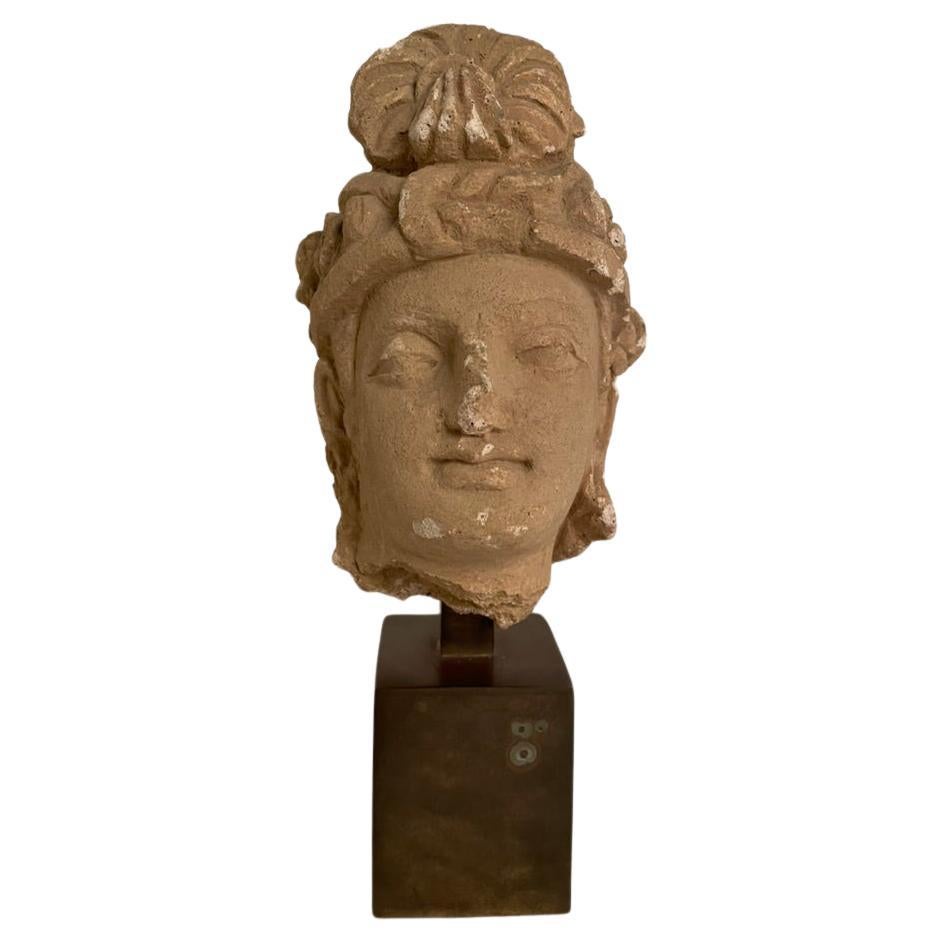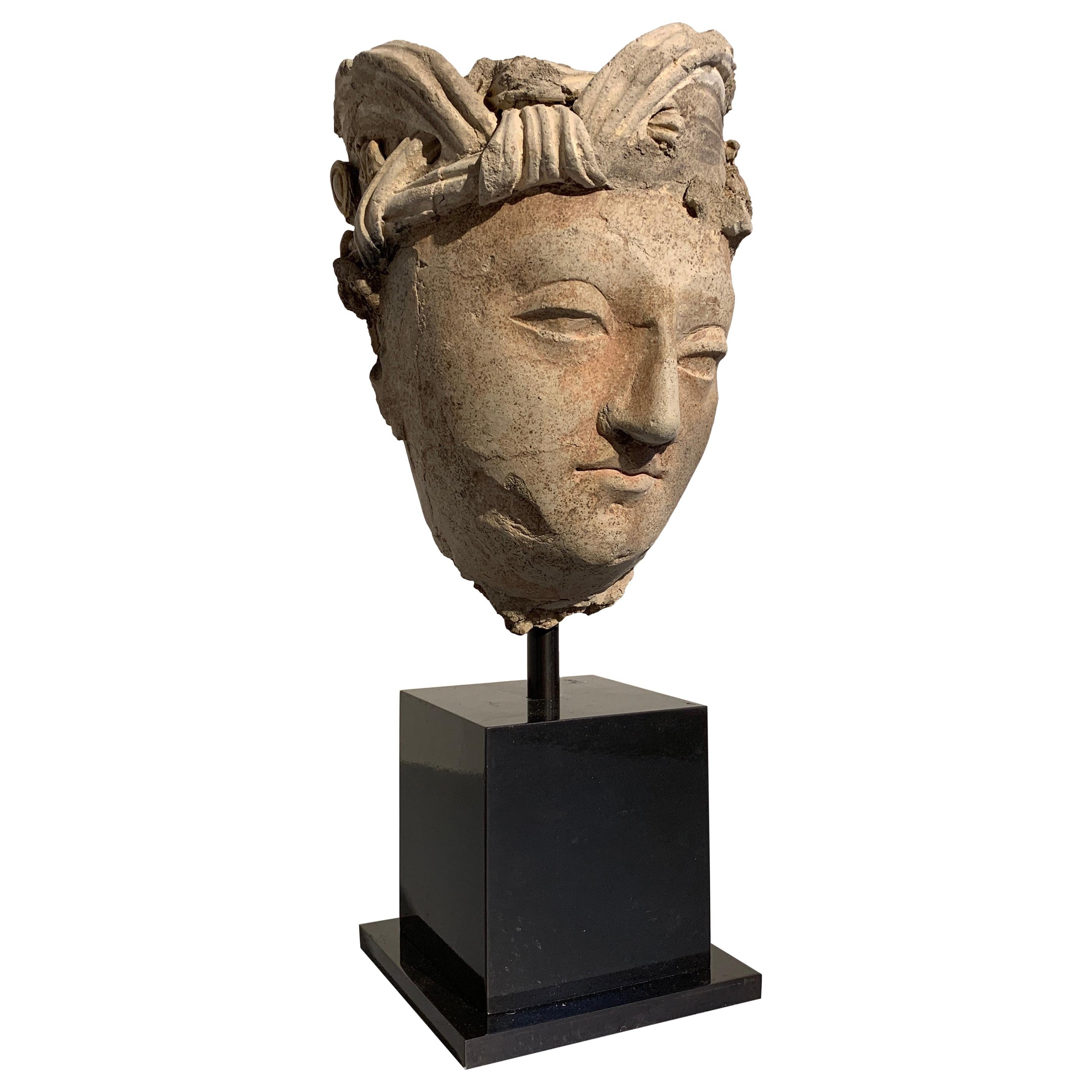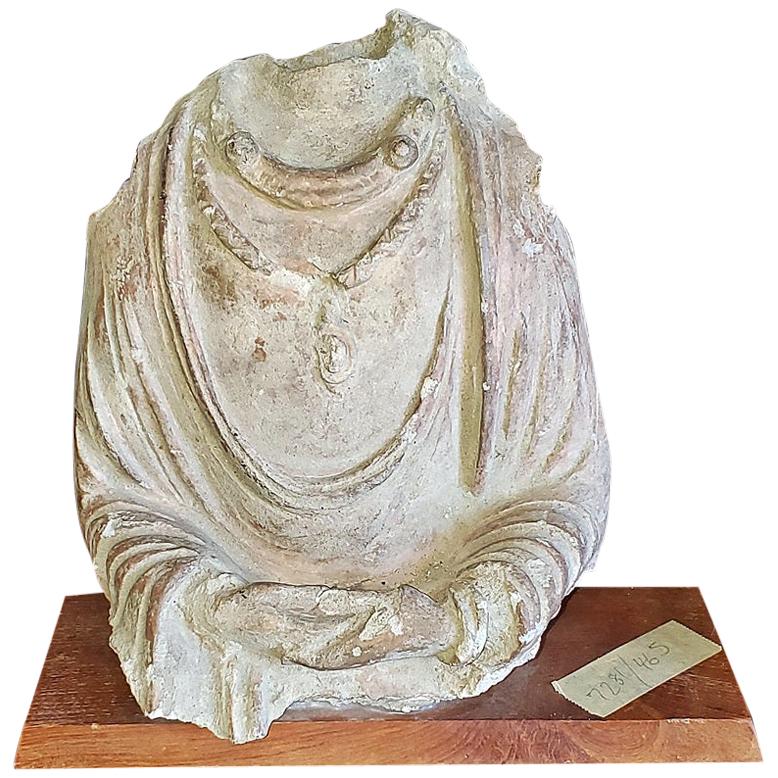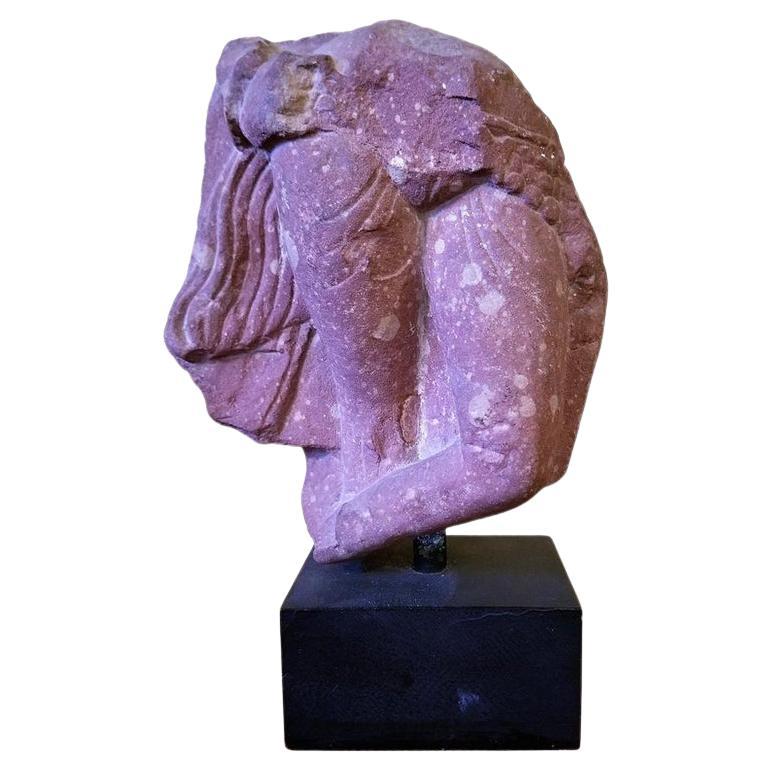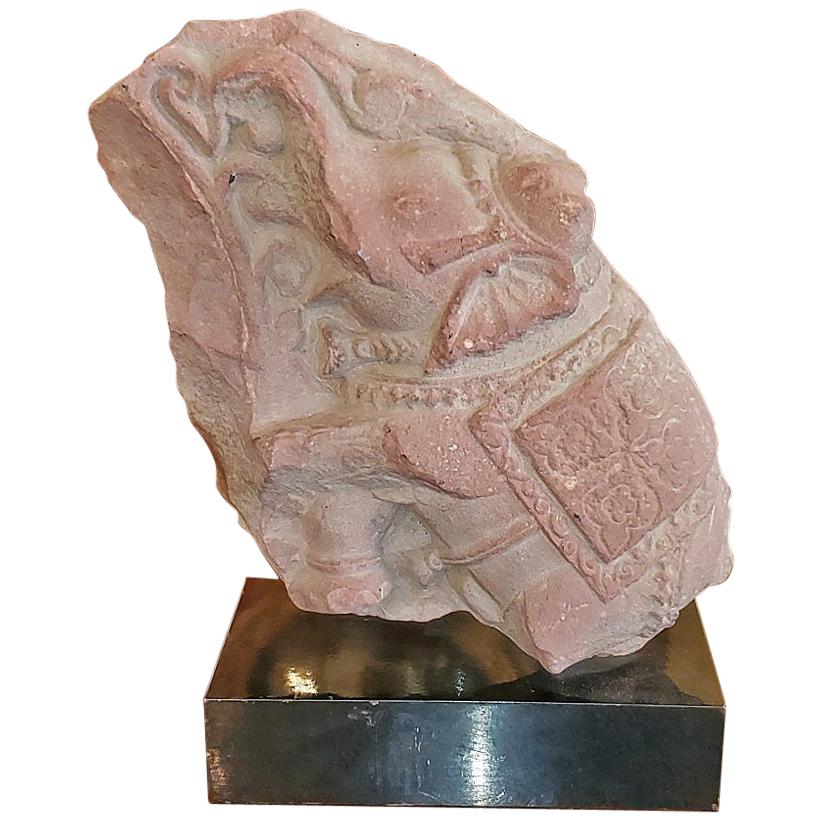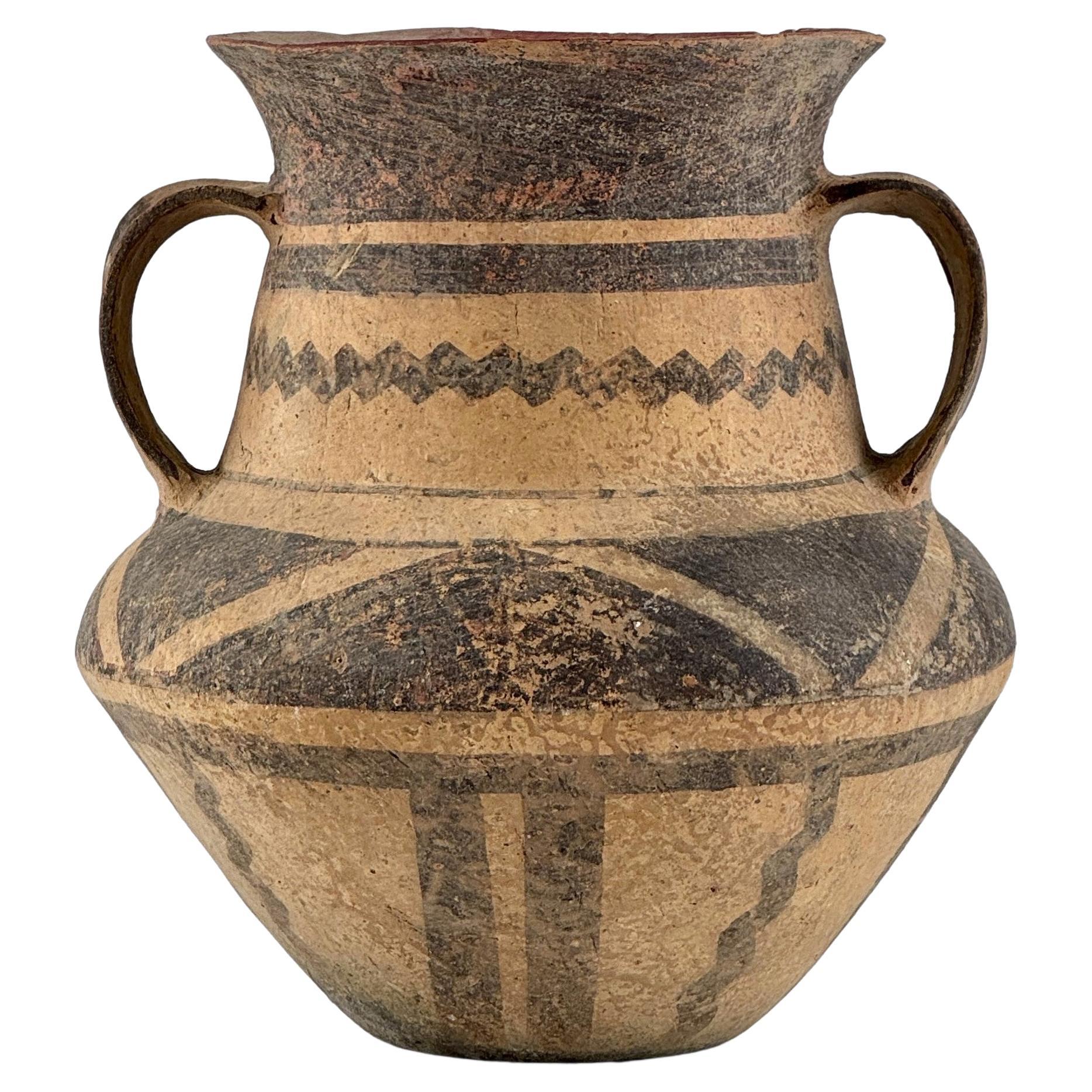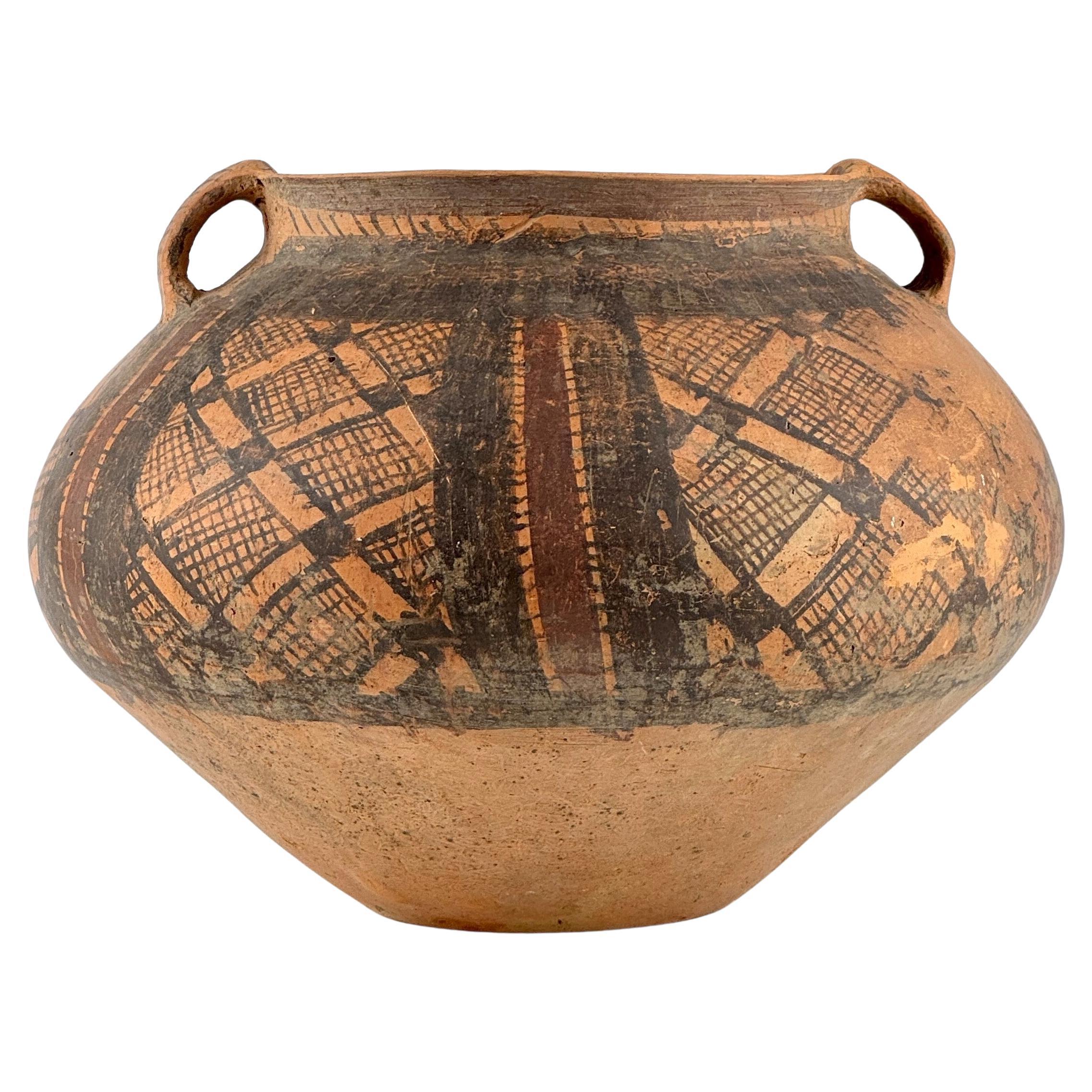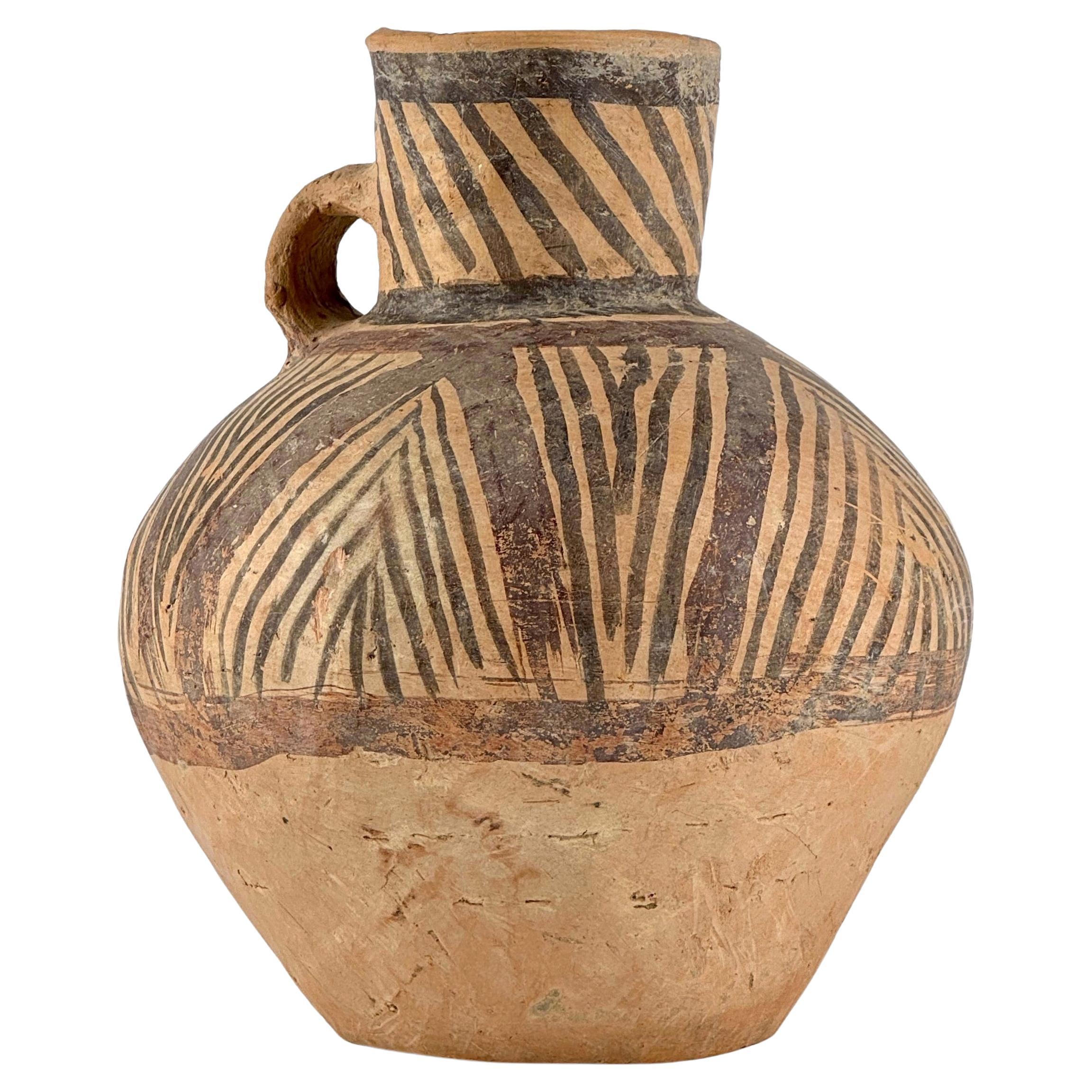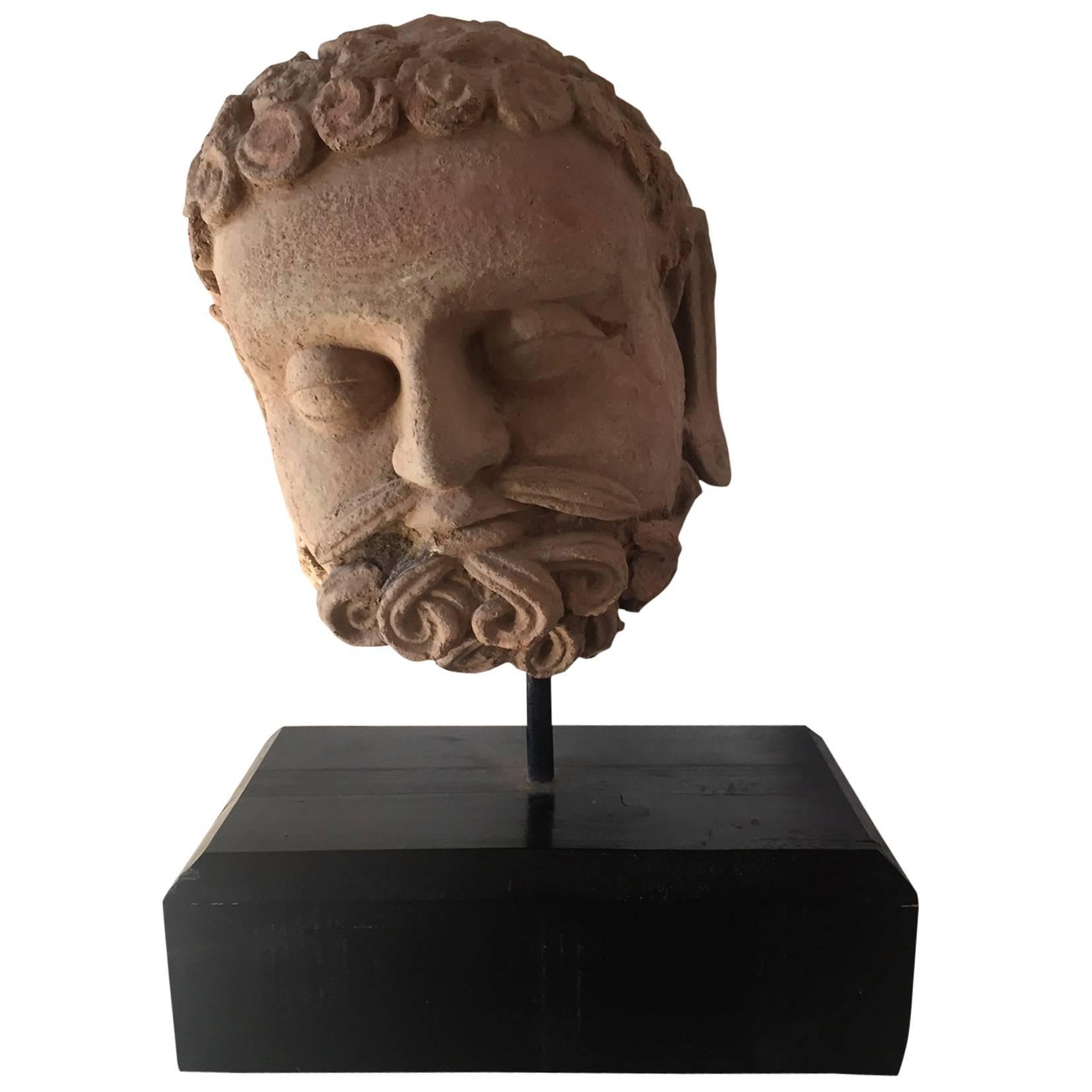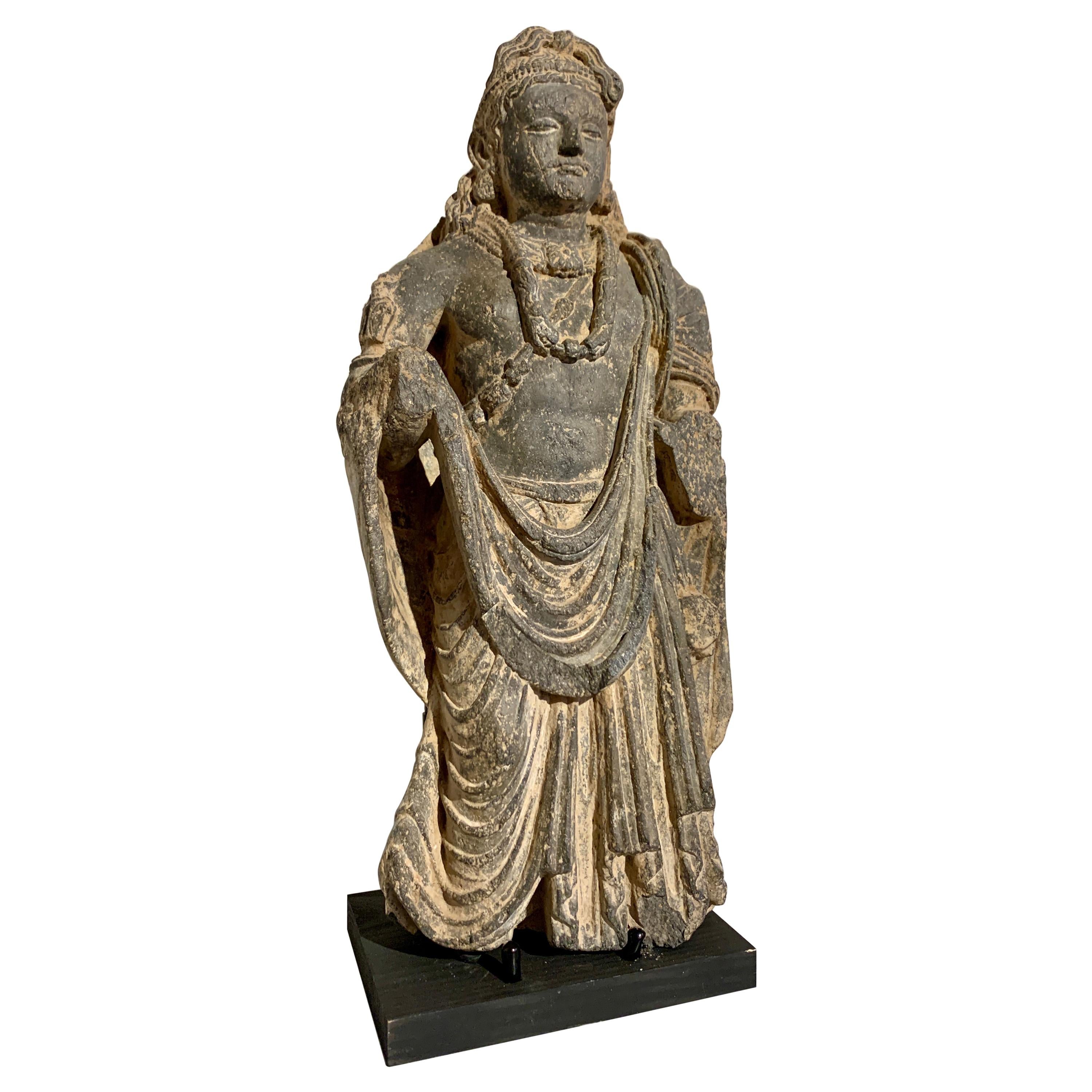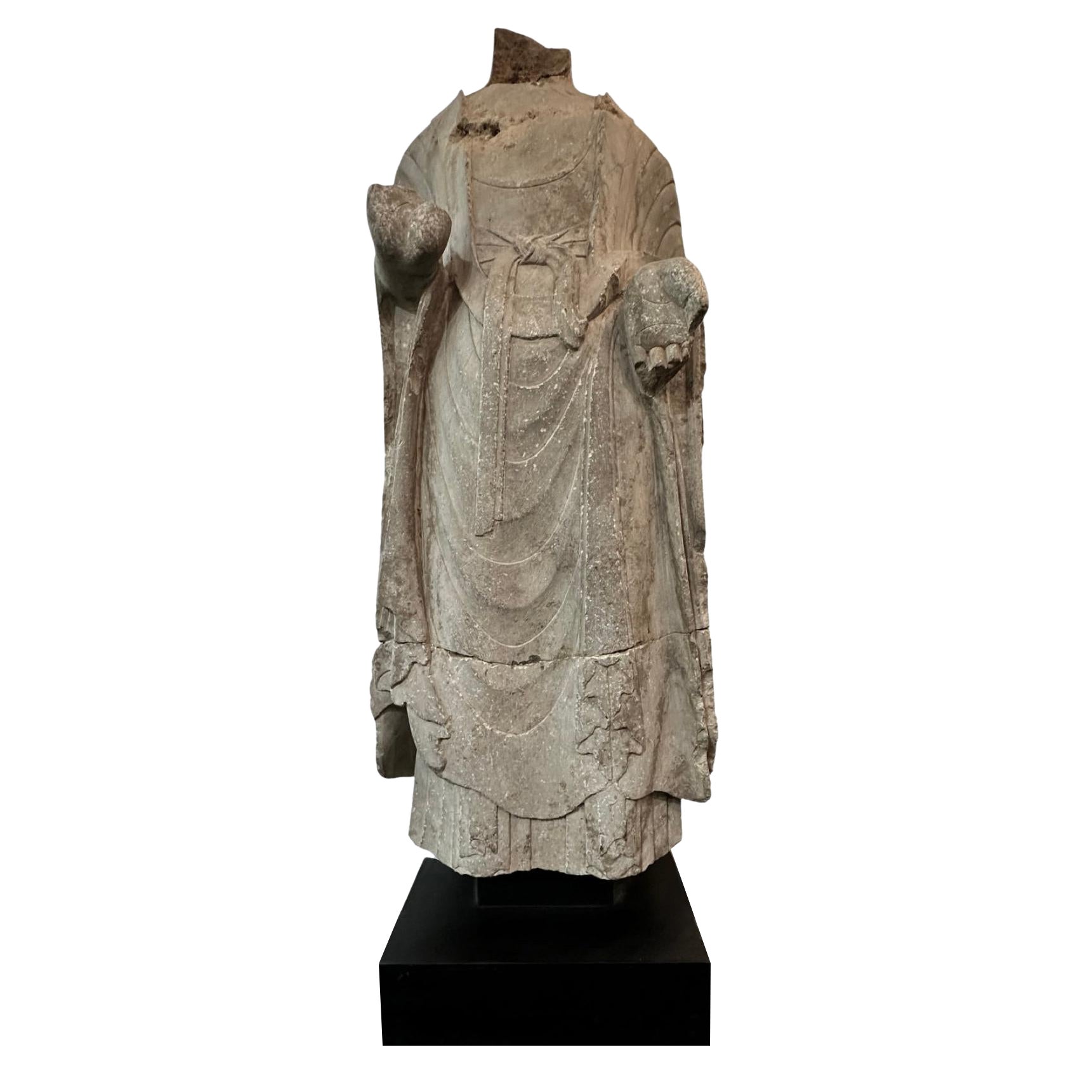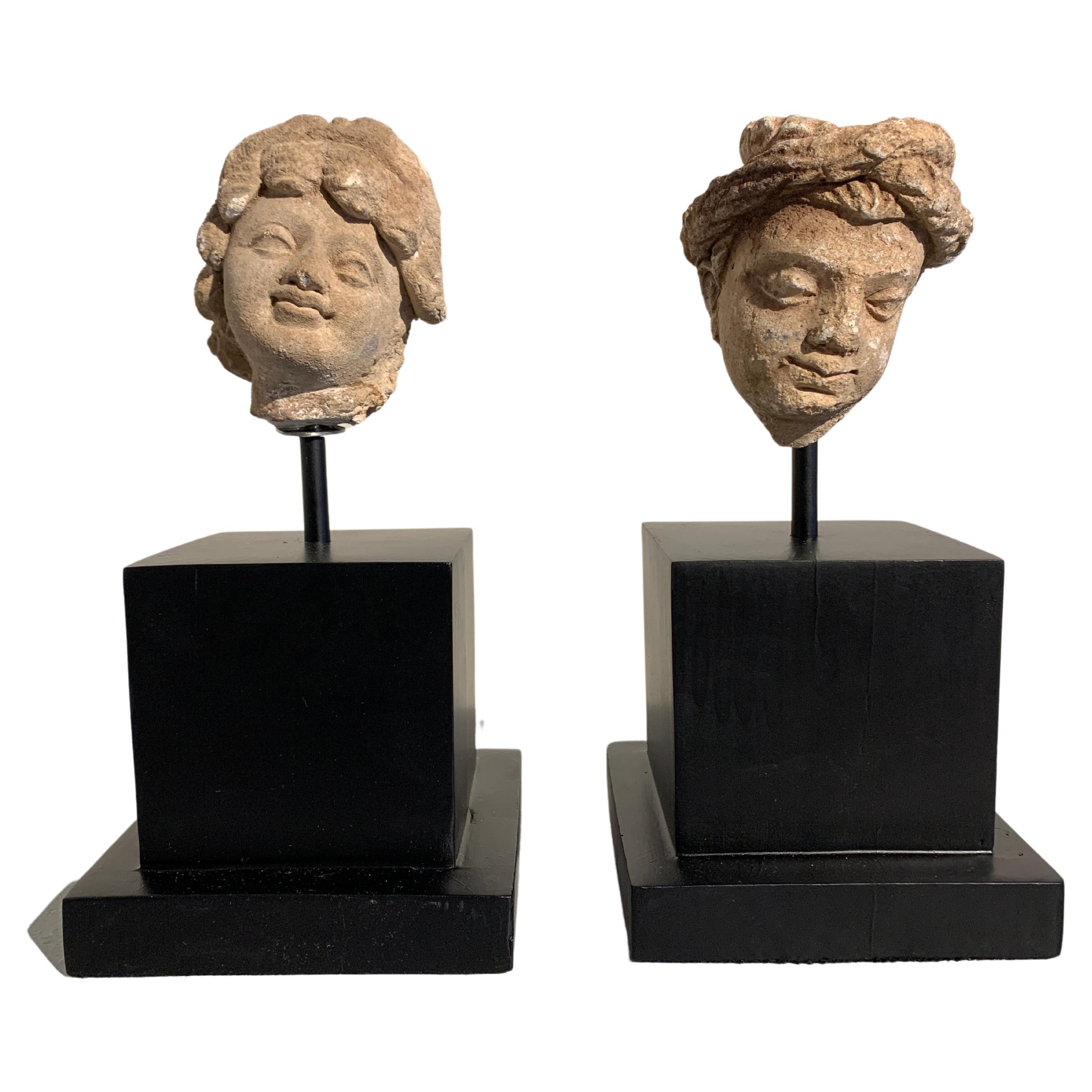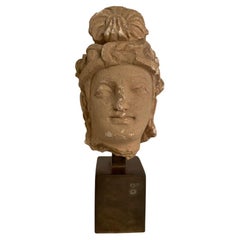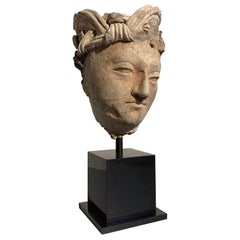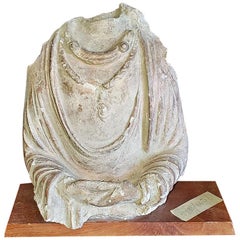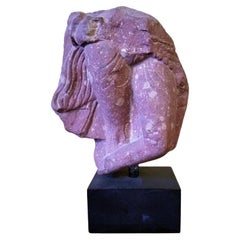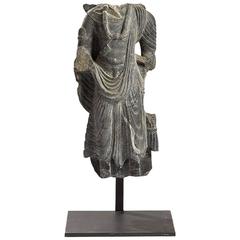
Torso of a Standing Bodhisattva, Gandhara, 2nd-3rd Century
View Similar Items
1 of 8
Torso of a Standing Bodhisattva, Gandhara, 2nd-3rd Century
About the Item
- Dimensions:Height: 32.68 in (83 cm)Width: 15.75 in (40 cm)Depth: 5.91 in (15 cm)
- Style:Other (Of the Period)
- Materials and Techniques:
- Place of Origin:
- Period:
- Date of Manufacture:300-400 BC
- Condition:Wear consistent with age and use.
- Seller Location:Vigevano, IT
- Reference Number:Seller: 9000-00901stDibs: LU127726448613
Authenticity Guarantee
In the unlikely event there’s an issue with an item’s authenticity, contact us within 1 year for a full refund. DetailsMoney-Back Guarantee
If your item is not as described, is damaged in transit, or does not arrive, contact us within 7 days for a full refund. Details24-Hour Cancellation
You have a 24-hour grace period in which to reconsider your purchase, with no questions asked.Vetted Professional Sellers
Our world-class sellers must adhere to strict standards for service and quality, maintaining the integrity of our listings.Price-Match Guarantee
If you find that a seller listed the same item for a lower price elsewhere, we’ll match it.Trusted Global Delivery
Our best-in-class carrier network provides specialized shipping options worldwide, including custom delivery.You May Also Like
Gandharan Stucco Head of a Bodhisattva, 3rd-5th Century
Located in Stamford, CT
Stucco head of a Bodhisattva, Gandhara, 3rd - 5th century AD. Mounted on a custom made brass base.
12 inches high ( head alone 8.2 in ) 5.5 wide 5 deep
Provanance: Ex Sotheby's, old...
Category
Antique 15th Century and Earlier Sculptures and Carvings
Materials
Stucco
Gandharan Stucco Head of a Bodhisattva, Region of Hadda, 3rd-5th Century
Located in Austin, TX
A striking Gandharan molded stucco head of a male Bodhisattva, tentatively identified as Manjushri, ancient region of Gandhara, probably Hadda or surrounding area, 3rd-5th century.
The Bodhisattva is sculpted of stucco in an idealized manner as a youthful male, with soft and kind features, a benign expression on his face. He wears an elaborate pleated turban wrapped around his head, with two sweeping lobes at the front.
His turban secured on one side by a small image of a roaring lion. The lion may be read as a reference to Manjushri, the Bodhisattva of Wisdom, who is often depicted as riding or subduing a roaring lion, a metaphor for taming the wild thoughts of the mind.
Manjushri gazes outwards in a beatific manner from almond shaped eyes, a gentle smile on his lips. The eyes at different levels when looking at the sculpture head on, indicating the original placement of the head was meant to be viewed at an angle.
Remnants of pigments to the eyes, nose, mouth and ears.
Mounted on a custom black metal stand.
Hadda was an important center of Buddhist learning in the early history of Greco Buddhist Gandhara, and at one time may have housed a bone relic of the historical Buddha, Shakyamuni. The sculpture and architecture of Hadda followed Hellenistic artistic conventions faithfully, leading some scholars to believe the distinct Greco Buddhist style of Gandhara was first developed in Hadda before spreading to the rest of the region.
The kingdom of Gandhara was situated at a crossroads of trade and cultures. Being one of the last remnants of Alexander the Great's Empire, the inhabitants of the Greco-Bactrian Buddhist kingdom preserved Greek culture and heritage for centuries after the decline of the Greek Empire...
Category
Antique 15th Century and Earlier Afghan Hellenistic Sculptures and Carvings
Materials
Stucco
A Stucco Torso of the Buddha, Gandhara, 4th-5th Century
Located in Dallas, TX
PRESENTING a STUNNING piece of Indian Antiquity from circa the 4th-5th Century, namely, A Stucco Torso of the Buddha, Gandhara.
Ancient Gandhara is located in the rugged foothills of the Himalayas in what is today northwest Pakistan and eastern Afghanistan, was for centuries a thriving center of trade along the Silk Road linking China, South Asia, and the Mediterranean.
The piece was purchased by a Private Collector at Sotheby’s, or more probably, Christies of New York Auction pre-2000. The paper label on the wooden base is “7281/465” for Sale Number 7281, Lot No. 465.
Sotheby’s and Christies operate a twice yearly auction of Southeast Asian Art & Antiquities in New York in the months of March and September.
The Sale Number is more like a ‘Christies;’ Sale Number but we cannot locate any records for this sale online as it was pre-2004.
The sculpture is a Gandharan stucco headless bust...
Category
Antique 15th Century and Earlier Afghan Medieval Antiquities
Materials
Stucco
2nd Century Indian Red Sandstone Fragment of a Woman
Located in Dallas, TX
Presenting a stunning little piece of Southeast Asian Indian Antiquity, namely, a Double-sided 2nd Century Red Sandstone Fragment of a Woman.
From India, Uttar Pradesh, Mathura.
This piece has impeccable Provenance !
It was purchased by a Private Dallas Collector at Christie’s New York Auction on 31st March 2005. Sale Number 1492, Lot No. 43.
Christie’s operate a twice yearly auction of Southeast Asian Art & Antiquities in New York in the months of March and September.
The sculpture was described as “Property of a European Estate. A Double-sided Red Sandstone Fragment of a Woman. India, Uttar Pradesh, Mathura, Circa 2nd Century.”
“Both sides similarly depicting the lower body with a flared sash at left and remains of chained belt: marked with an accession number 1931 on reverse. 8 in (29.2 cm.) high”
Provenance: Collection of Prince and Princess Aschwin zur Lippe-Biesterfeld, acquired on 1958?.
It carried an Auction estimate of USD 3,000 to USD 5,000 and Sold for USD 2,880 (not including Buyers Premium).
Allowing for inflation alone this would be over $6,300 in today’s value.
It has substantially increased in value over the years as a RARE piece from a prestigious Collection and a RARE piece of antique Asian antiquity...
Category
Antique 15th Century and Earlier Indian Medieval Antiquities
Materials
Sandstone
3rd Century Indian Red Sandstone Elephant Carving
Located in Dallas, TX
PRESENTING a STUNNING piece of Indian Antiquity namely, a 3rd Century Red Sandstone Elephant carving.
From Central India.
The piece was purchased by a ...
Category
Antique 15th Century and Earlier Indian Medieval Sculptures and Carvings
Materials
Sandstone
Neolithic Pottery Amphora(Gansu Province), 3rd-2nd Millenium BC
Located in seoul, KR
Neolithic Vase with raised neck, slightly flared, two handles. Geometric designs and stylized bovine heads in black. Acquired in Hong Kong in the late 1990s.
Date : 3,000-2,000 BC
M...
Category
Antique 15th Century and Earlier Hong Kong Antiquities
Materials
Earthenware, Pottery
$2,600 Sale Price
35% Off
Recently Viewed
View AllMore Ways To Browse
Indian Head Sculpture
2nd Empire Furniture
300 Bc
Indian Torso
East Indian Indian Necklaces
Gandhara Sculpture
Kushan Empire
Antique Chinese Rice Boxes
Chinese Lapis Lazuli Sculpture
Chinese Printing Block
Chinese Red Coral Carvings
Chinese Rice Box
Copper Buddha Statue
Farm Lanterns
Female Buddha Statues
Hand Carved Soapstone Vases
Jade And Soapstone
Japanese Garden Rabbit
